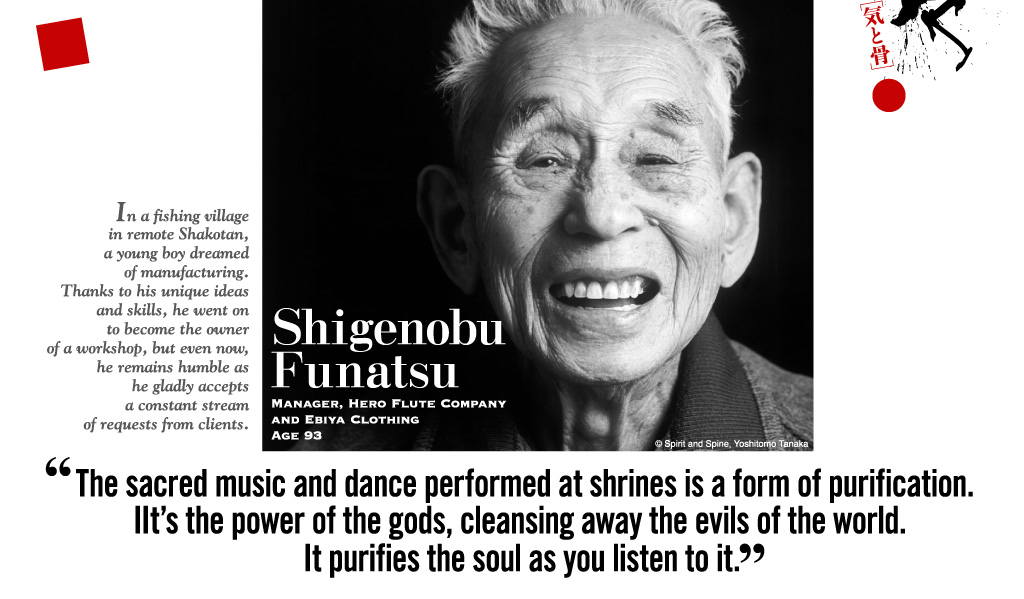Funatsu is not a flute-maker by profession. However, from a very young age, he danced in performances of Omoto-Kagura at local festivals. The music penetrates his very bones. It was during his mid-20s, when he was demobilized and returned home from China after the war, that he really became passionate about the kagura flute. He became so skilled that if he could whistle a song, he could play it on the flute.
Although he strove hard to pass on his skills to the next generation, he was unable to nurture young flutists capable of playing the traditional honbue flute, which is hard to master. There was an “improved flute” being manufactured in the city of Hamada, but it was unsuited to kagura. When he reached his 60th birthday, he resolved to do something about that. Having thrown himself into the task of developing a flute that was both easy to play and suitable for kagura, he succeeded in creating a yokobue (transverse flute) of his own. If the honbue is the equivalent of a Western classical flute, then this is something akin to the recorder (end-blown flute), which many children learn to play at school. Called “Hero” because anyone can play it, this flute has come as glad tidings for the future of Iwami’s traditions.
Depite the fact that he was previously unable to read music, Funatsu has studied hard and has begun transcribing kagura flute music using staff notation. In his 70s, he learned how to use a computer and published numerous performances of Omoto-Kagura with accurate scores and video images, despite the fact that he had just beaten stomach cancer and was in the midst of nursing his wife through a serious illness.
Now, he fulfills the orders that come in from across the country via the Internet. All of his efforts are dedicated to the goal of preserving the unique local performing arts in each part of Japan for future generations. One could even go so far as to describe the man himself as a hero in reviving traditional culture.







































































































